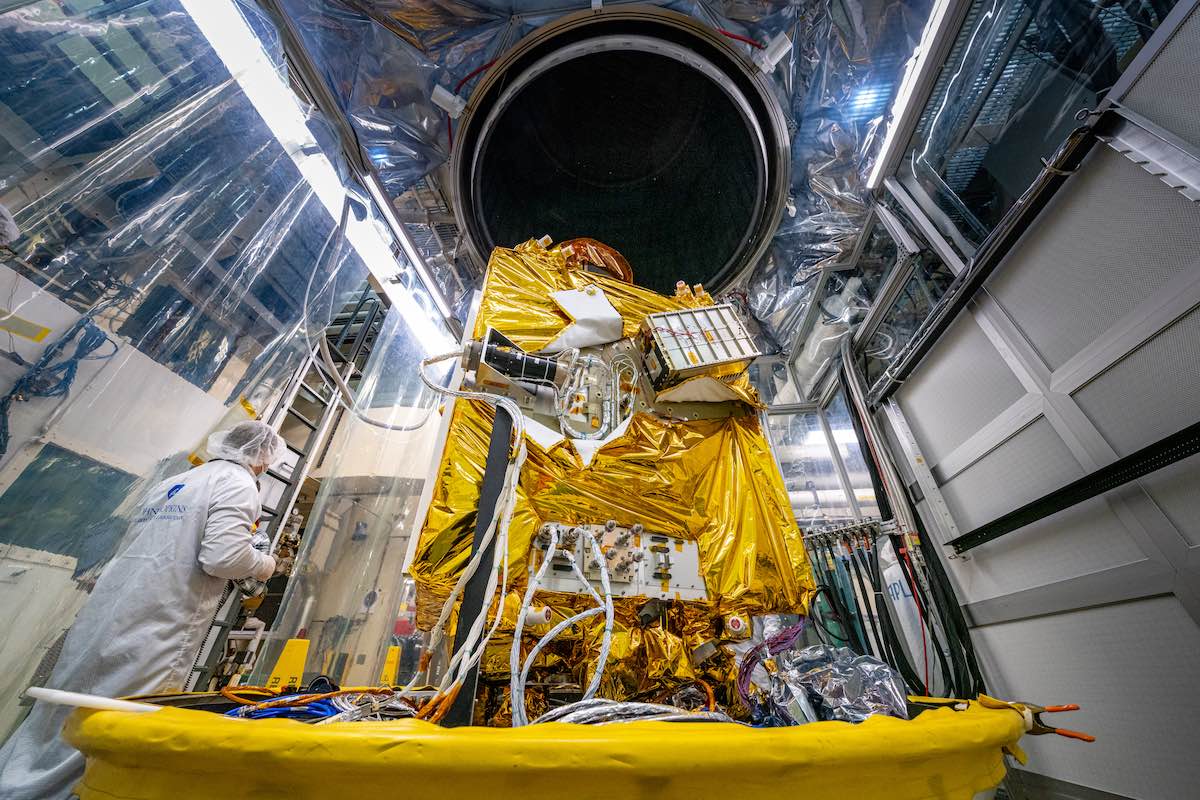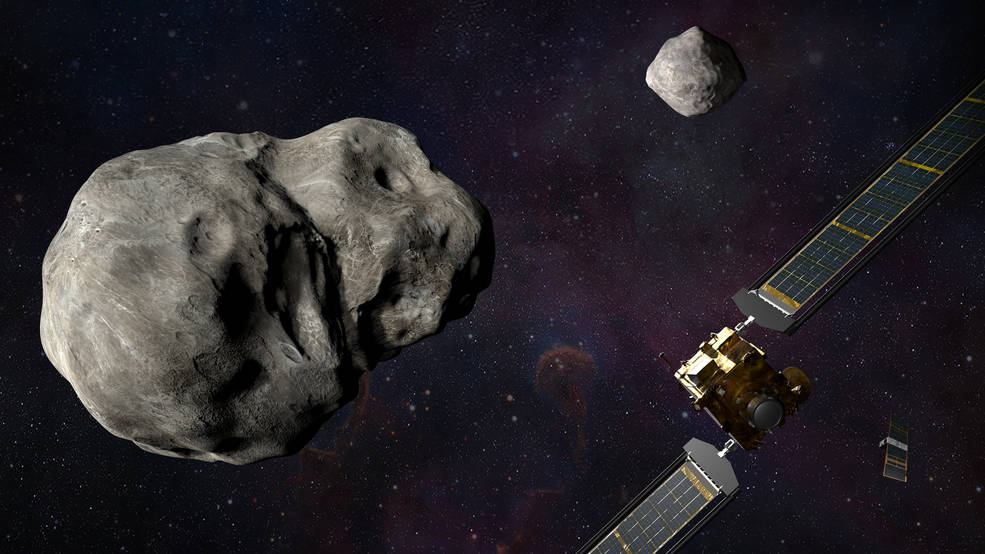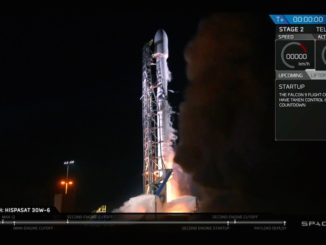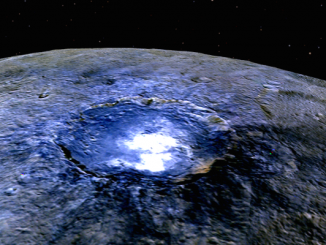
The launch of a NASA spacecraft designed to smash into an asteroid to try out a technique that could protect Earth from threatening space rocks has slipped from July until November, at the earliest, after development delays partially caused by coronavirus-related work slowdowns.
NASA’s Double Asteroid Redirection Test, or DART, spacecraft will take aim on a pair of asteroids orbiting one another. A team of ground-based astronomers, along with an Italian ridealong CubeSat, will observe the spacecraft’s destructive collision.
The larger of the two asteroids, named Didymos, is about a half-mile (780 meters) wide. Its smaller companion, named Dimorphos, is about 525 feet (160 meters) in size. DART will target Dimorphos, the smaller of the two asteroids. Scientists want to measure how much the 1,100-pound (500-kilogram) spacecraft knocks Dimorphos off its orbit around Didymos when it collides at a velocity of nearly 15,000 mph (6.6 kilometers per second).
NASA is developing the robotic mission on a budget of approximately $258 million, a relatively low cost compared to the agency’s other solar system probes. The Johns Hopkins University Applied Physics Laboratory in Maryland is building and testing the spacecraft ahead of its launch aboard a SpaceX Falcon 9 rocket from Vandenberg Air Force Base, California.
But delays in delivery of the spacecraft’s primary instrument and solar arrays have forced managers to abandon plans to launch the mission during its primary launch window in July.
“At NASA, mission success and safety are of the utmost importance, and after a careful risk assessment, it became clear DART could not feasibly and safely launch within the primary launch window,” said Thomas Zurbuchen, associate administrator for the Science Mission Directorate at NASA Headquarters in Washington, in a statement last month.
NASA said the delay was caused by “technical challenges” associated with the spacecraft’s Didymos Reconnaissance and Asteroid Camera for Optical navigation, or DRACO, imaging system, which needs to be reinforced to ensure it can survive the stresses of a rocket launch. The delivery of the spacecraft’s Roll-Out Solar Arrays, known as ROSA, has been delayed due to “supply chain impacts resulting from, but not limited to, the COVID-19 pandemic,” the space agency said in a statement.
“To ensure DART is poised for mission success, NASA directed the team pursue the earliest possible launch opportunity during the secondary launch window to allow more time for DRACO testing and delivery of ROSA, and provide a safe working environment through the COVID-19 pandemic,” Zurbuchen said.
The backup launch window opens Nov. 24 and extends to Feb. 15, 2022. The mission will still launch on a Falcon 9 rocket from Vandenberg, according to Omar Baez, the NASA launch director for DART.
NASA’s Launch Services Program, which manages launches for the agency’s science missions, is working with SpaceX to identify the “earliest possible launch opportunity within this secondary window,” NASA said.
“While COVID-19 was not the sole factor for this delay, it has been a significant and critically contributing factor for multiple issues,” the agency said.
Lindley Johnson, NASA’s planetary defense officer, said March 1 that the alignment of the orbit of Didymos around the sun with Earth’s orbit will allow DART to still reach its destination Sept. 30, 2022, when Didymos and Dimorphos will be close enough to Earth for ground-based telescopes to observe changes caused by the spacecraft’s kinetic impact.
“So even thought the launch has slipped to no earlier than November of this year, we will still impact at about the same time next year,” Johnson said.
DART will test out the effectiveness of a kinetic impactor at nudging an asteroid off a collision course with Earth. Scientists want to try the asteroid redirect demonstration on Didymos and Dimorphos because they do not pose a threat to our planet.

DART will use its DRACO imager to locate the double asteroid and autonomously navigate itself toward Dimorphos, relying on algorithms similar to those used in missile guidance systems. A high-gain communications antenna will beam the DRACO images back to Earth before the impact destroys the spacecraft.
DRACO is derived from the high-resolution camera flying on NASA’s New Horizons spacecraft, which made the closest-ever observations of Pluto when it flew by the distant dwarf planet in 2015.
About 10 days before colliding with Dimorphos, DART will release a small CubeSat named LICIACube developed by the Italian Space Agency. The small briefcase-sized spacecraft will witness DART’s high-speed impact as it sails safely by the double asteroid, snapping pictures of the debris plume kicked up by the collision.
The DART spacecraft’s solar arrays are built by Deployable Space Systems, which specializes in roll-out solar blankets that are lighter and roll up into more compact packages than conventional power panels. A roll-out solar array from Deployable Space Systems was demonstrated outside the International Space Station in 2017, and NASA has ordered new roll-out solar blankets from DSS to augment the space station’s electrical system.
DART will also test a new ion thruster design with higher performance and improved efficiency over ion engines flown on previous interplanetary missions.
Email the author.
Follow Stephen Clark on Twitter: @StephenClark1.



